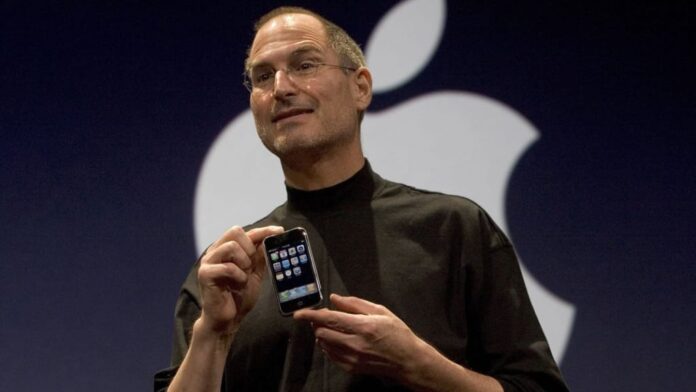When Steve Jobs stood on the MacWorld stage in 2007, most of the people in attendance sensed that something different was about to happen. Apple had been rumored to be working on a smartphone, though almost no one knew exactly what that meant. Would it be an iPod that could make phone calls? And, if so, would it still have a click wheel?
Those were real questions that–in hindsight–were a sign no one had any idea of what the iPhone would be or become. It’s impossible to know what you don’t know, and, as excited as everyone was at the time, the iPhone was an expensive mobile phone that you could only use with one carrier–AT&T.
Still, the “revolutionary mobile phone” that Jobs held in his hand was to become the most successful product in history and make Apple the most valuable company ever.
It’s hard to remember, looking back, that it wasn’t a foregone conclusion. In fact, there are at least three ways the iPhone could have–and almost did–fail completely.
The Deal With AT&T
Until the iPhone, the features of every mobile phone sold were largely dictated by the mobile carriers. Not only that, but they usually came loaded with a bunch of bloatware that no one wanted, but the companies installed as a way to charge you additional fees.
Jobs had convinced AT&T (Cingular at the time) to accept a groundbreaking deal to be the exclusive carrier of the iPhone. In exchange, Apple would receive $10 per month, per customer, as well as retain complete control over the design of the iPhone. He even convinced the mobile carrier to develop a completely new feature, known as visual voicemail, which was exclusive to the iPhone.
If Apple hadn’t been able to strike a deal with one of the carriers, there would have been no iPhone. Apple didn’t have a cellular network of its own, and it seems unlikely Jobs would have been willing to compromise on his vision for the iPhone.
There Almost Wasn’t an App Store
When the iPhone first shipped in 2007, there were 16 apps. That was it. There was no App Store, and the only third-party app available was Google Maps–which, didn’t even have turn-by-turn directions since the iPhone didn’t have GPS. It wasn’t until early 2008 when Jobs agreed that the iPhone should have a store where developers could distribute apps. That turned out to be one of the most important decisions in the history of business.
I think it’s fair to say that the App Store is as integral to the iPhone experience as the touch screen. Without the ability to install third-party apps, the iPhone would have been a novel mobile device, and I’m sure a lot of people would have continued to buy them.
I think, however, it’s unlikely it would have transformed the way we get information, communicate with people, and interact with the world around us. It’s the App Store that makes the iPhone such a powerful platform, and it’s that combination that drives more than half of all of Apple’s revenue.
“We don’t have a product yet.”
At a demo in 2006, the iPhone prototype was a train wreck. Its software was full of bugs and didn’t do much of what it would have to do in just a few months if Apple was ever going to ship the iPhone. Jobs told his team “we don’t have a product yet,” and sent the engineers, all of whom were working in secret, back to fix all of the things that were broken.
It was a stressful few months, but Apple was on a deadline. Failure wasn’t an option, but it was an incredibly real possibility. It had to deliver the iPhone–or at least something it could demo–by MacWorld. If it couldn’t, Apple wouldn’t just fail to meet expectations, it may have never become what it is today–the world’s most profitable company with the most successful product ever.
Credit: Source link










